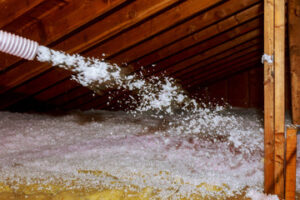Realtor Savannah GA is a real estate agent who is a member of the National Association of Realtors (NAR). This professional can help you find and buy your next home. They can also assist with the paperwork involved in the process.

When searching for a Realtor, look for someone who adheres to NAR’s code of ethics and has extensive knowledge of the local market.
Expertise is a person’s advanced knowledge or skill in a specific field. People often develop expertise through study and hands-on experience. Some examples of experts include Yo-Yo Ma (musical performance), Fred Astaire and Ginger Rogers (ballroom dance), Antiques Roadshow appraisers, Albert Einstein (physics), Tiger Woods (golf), and Bette Davis (acting).
Real estate agents are licensed professionals who facilitate the buying and selling of residential and commercial properties. They provide guidance, support, and market insights to their clients. They also negotiate real estate transactions and help their clients prepare, submit, and file necessary paperwork. In addition to facilitating sales, they may also provide services like property inspections and appraisals.
Some real estate agents specialize in particular areas or types of property, such as rental properties or single-family homes. Others work as listing agents, helping home sellers list their properties for sale, or buyer’s agents, finding homes that match a client’s preferences. They may also focus on a certain type of property, such as commercial real estate or land sales.
A Realtor is a real estate agent who has opted to become a member of the National Association of Realtors (NAR). Members must have a real estate license and meet NAR’s stringent ethical standards. NAR is the largest trade association in the United States, with 1.5 million+ members—real estate brokers, salespeople, property managers, appraisers, and counselors.
A Realtor’s job is not easy. They are required to work long hours for months on end, and they don’t always receive a regular paycheck. They also have to be able to save or invest their earnings during high-earning months and budget expenses during the slower ones. Despite these challenges, there are many benefits to becoming a Realtor.
Communication skills
The real estate industry is a people-oriented business, and the way a Realtor communicates with clients can have a big impact on their success. Realtors need to be able to convey information clearly, understand social cues, and negotiate the terms of a transaction with buyers and sellers.
In addition to verbal communication skills, Realtors also need to have strong written communication skills in order to prepare property listings, contracts, and other marketing materials. In addition, Realtors often work with clients outside of the office and must be able to communicate with them via email, text message, or phone.
One of the most important communication skills for a Realtor is being accessible to their clients. Successful Realtors are able to answer their client’s questions quickly and effectively. They are also able to meet with clients on short notice and provide updates as needed.
Another essential component of effective communication is active listening. Top Realtors are able to ask insightful questions that allow them to understand their clients’ needs and goals. This allows them to offer properties that meet the client’s preferences and increase the chances of a successful sale.
Finally, top Realtors are skilled negotiators. They are able to negotiate prices, repairs, commissions, and other aspects of the transaction in a way that is mutually beneficial for both parties. In addition, they are able to defuse tense situations and find solutions that benefit everyone involved.
The more practice a new real estate agent has communicating with potential clients, other Realtors, and real estate affiliates, the easier it will become. These are all crucial components of a successful real estate career, and they can be developed through our pre-licensing courses. Learn more about our course offerings today!
Negotiation skills
A real estate agent’s negotiation skills are critical to a successful transaction. They must be able to communicate the client’s needs and negotiate a mutually beneficial agreement. This can save or earn clients thousands of dollars in the buying or selling process. Good negotiators understand how to steer conversations and resolve issues efficiently, which can reduce the amount of stress associated with real estate transactions.
To be an effective real estate negotiator, you must be able to read body language and understand the other person’s motivations. You also need to know how to use information to your advantage. This includes knowing the facts about the property and its value, as well as understanding how to read market trends. This is why it’s important to do your research before entering into negotiations.
The key to becoming a good negotiator is staying calm and being prepared for every situation. You should have a list of your goals for the negotiation and an idea of the current market climate. For example, in a hot market, it may be necessary to offer above the asking price in order to get a deal done. Having this information will help you prepare for every scenario and ensure that you are in control of the conversation.
Another key to a successful negotiation is being able to walk away from the table. Many new agents make the mistake of continuing to push even if they can see that the other party is not interested in their demands. This is a big mistake, and it’s important to learn how to walk away from the table gracefully. Ideally, you should try to negotiate a deal face-to-face if possible, as it’s easier to read body language and evaluate the other person’s behavior.
Marketing skills
A good realtor should have a strong marketing skill set. This includes a thorough understanding of the real estate industry, how to market properties, and how to use social media. This is a great way to attract new clients and build your business. In addition, a good realtor should be knowledgeable about local laws and regulations. This will help them serve their clients better and make them feel comfortable with their decision-making process.
In the real estate industry, client satisfaction is the key to repeat business and referrals. This is why it’s important to focus on customer service skills and stay up-to-date with the latest trends in the market. You can do this by taking classes and pursuing certifications in topics like customer service, real estate investing, and sustainable housing.
The best realtors have excellent teaching skills and can explain complex concepts to their clients in an easy-to-understand manner. This is especially crucial when dealing with buyers who are not familiar with real estate law or real estate terminology. This skill also helps you guide your clients through the complicated paperwork and legal technicalities involved in a sale.
Besides having marketing and sales skills, a Realtor should be tech-savvy and have the ability to use real estate software tools. These include virtual tour software, real estate databases, and customer-relationship management (CRM) systems. This is because the digital world has transformed the real estate industry, and it’s essential for agents to embrace it in order to succeed.
In the end, the best Realtors are those who have a passion for their profession and have a strong desire to help people make the right decisions. They’re the ones who know what they want and are willing to work hard to achieve it.
Knowledge of the local market
Whether you are a broker, agent, or investor, local market knowledge is essential to your success in commercial real estate (CRE). This includes understanding current and historical pricing trends, property values, and plans for future development. It also enables you to provide more informed advice to clients.
As a real estate professional, you should stay up to date on local market conditions by attending educational courses and workshops offered by national and regional organizations. You can also use online resources to learn about the current state of the market in a particular area. By doing so, you can make more informed decisions about which properties to purchase and when to sell.
You can find a reputable Realtor by searching for “real estate agents in my area.” Many online platforms, such as Zillow and Trulia, offer recommendations based on real-time data and customer reviews. In addition, you can ask for recommendations from people you know or local chambers of commerce.
Local market knowledge is particularly important when it comes to marketing properties. It allows you to develop targeted campaigns that reach the right buyers. This can include things like using the right language and imagery in your advertisements. It also helps you to develop the best listing price for a property, given recent market trends.
It is also useful to know the rules and regulations of local homeowners’ associations. This way, you can help prepare your clients for moving to a new neighborhood, so they don’t encounter any surprises down the road. For example, some HOAs have strict rules about home improvements and prohibit private pools and privacy fences. Having this knowledge will save your clients time and money by avoiding unexpected expenses.


